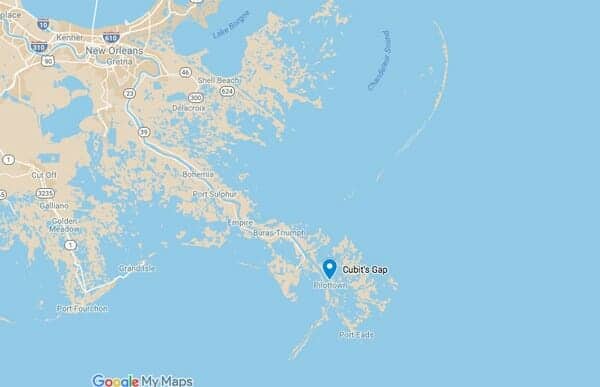Cubit’s Gap subdelta — Rain collects on lily pads in the Delta National Wildlife Refuge on Tuesday, August 22, 2017. Scientist say “new” marsh is being created in the refuge by Cubit’s Gap, a cut in the Mississippi River levee, southeast of Venice. The cut is allowing river water and sediment to flow through the refuge. (Photo by Brett Duke, Nola.com | The Times-Picayune)
An oyster farmer by the name of Cubit had no grand designs when, in 1862, he dug a ditch into the east bank of the Mississippi River; he simply wanted a shortcut for his skiff. But his cut in the lower river delta at Pilottown, about 15 miles below Venice, unleashed the land-building power of the muddy Mississippi.
It poured through, widening the ditch into a broad canal that allowed enough river sediment through to create more than 75 square miles of coastal wetland in less than a century. On Tuesday (Aug. 22), marine scientist Alex Kolker tried stabbing a sediment borer into this young land, now a part of Delta National Wildlife Refuge, to see how it’s holding up. The blade landed with a thud rather than the squish he expected.

"This land here is so strong," he said. With some added muscle from a colleague, the tool was pushed deep enough to extract a cylinder of soil. It was dense, dark and fertile — the foundation of a healthy marsh. For Kolker, who works for Louisiana Universities Marine Consortium, the accident known as Cubit’s Gap hints at what two planned sediment diversion projects could […]
Full article: Old accident in Mississippi Delta holds lessons for saving Louisiana’s coast
More about the Mississippi River:
Upper Mississippi is ‘endangered,’ group says | qctimes.com
Five gross things we used to dump in the Mississippi River — and what we’re dumping now
Old accident in Mississippi Delta may save Louisiana coast
Mississippi River Sediment Diversions & Louisiana



